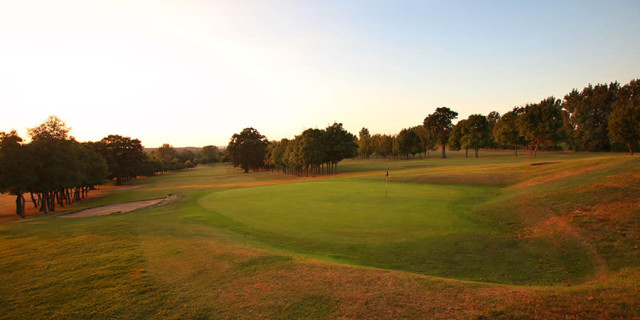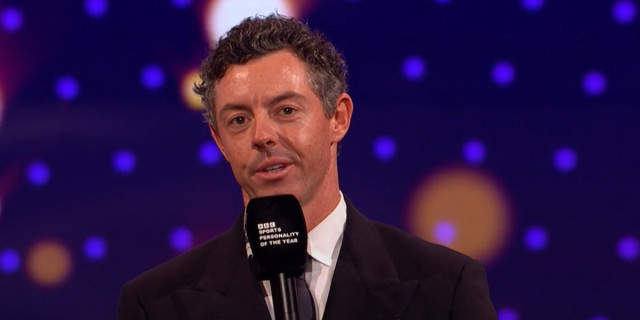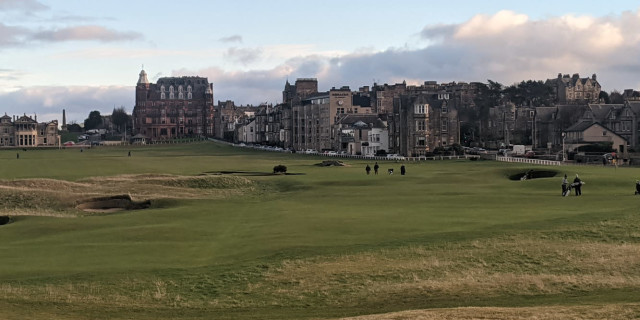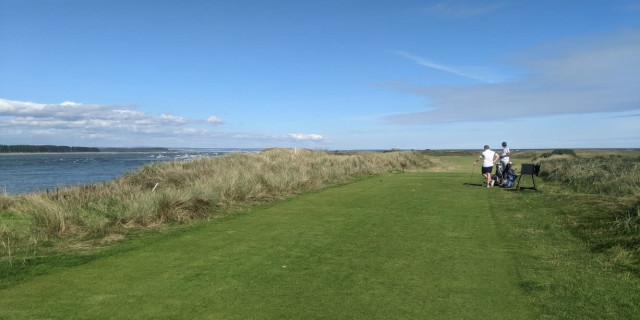
Wartime History of Golf #2 - Memorial at Hollinwell
Golfshake Ambassador Andrew Picken has a passion for golf and researching the history and tales behind the courses that we play on. Much of his recent interest has centered on the First World War, a topic that is timely due to the upcoming centenary of Armistice Day that brought the Western Front of that conflict to an end in 1918. Those events affected everyone, not least of all those connected with golf. In this series of articles, Andrew has explored the connections between those wartime years and the game.
I recently played in a pro-am event organised at Notts Golf Club, Hollinwell. As usual, with our very efficient professional player we had our team post-round debrief in the bar, over a pint.
I noticed that a small war memorial had been built into the fireplace in the spike bar and it detailed the names of all those who had been members of the club that were killed during during the First World War.
The names were inscribed on a plaque that had a beautiful patina because it had been cleaned so often. At the side of the fireplace was a framed picture of a man in uniform together with a series of medals.
It had an inscription that reads:
W L Rockley Junior Member Notts golf club.
Awarded the Military Cross in 1915 for conspicuous gallantry and ability in the Gallipoli Peninsula
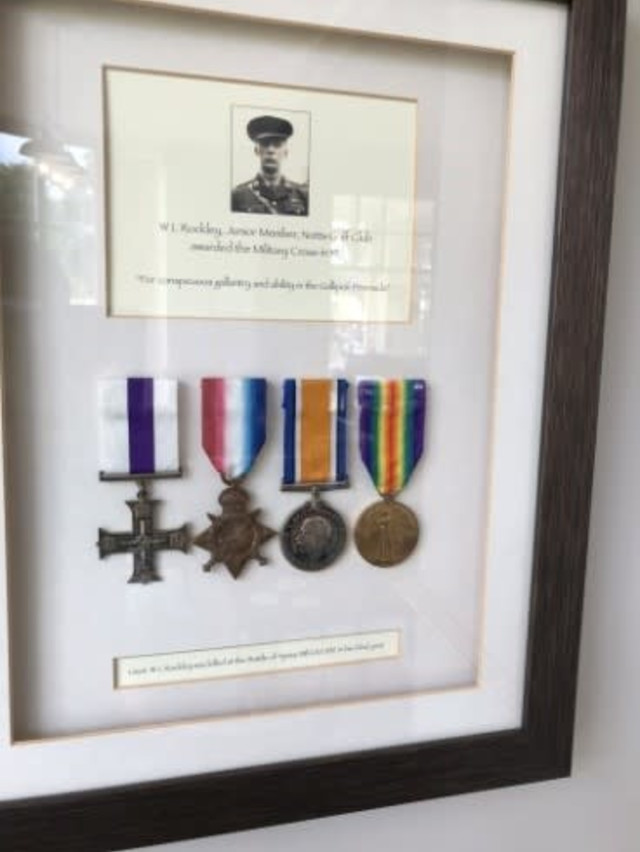
Underneath his medals it stated:
Lieut W L Rockley was killed at the Battle of Ypres 11th October 1917, in his 22nd year.
I took a discreet photograph of the items and we went back to our post round de-brief and pint.
As I drove home I remembered conversations that I had enjoyed with my late father. He was heavily involved with the Royal British Legion for over 47 years and he was awarded the British Empire Medal in 2016 in recognition of his efforts.
One of his many initiatives was to develop a teaching resource that he delivered to schools. He felt that the younger generations did not fully understand the significance of the Poppy Appeal nor where it came from and he sought to alter this recognising that those directly affected by the war were being lost to the current generation.
He talked about the items that we currently enjoy that would not have existed had it not have been for them being developed during WW1.
Things like:
Tea bags, essential times for the troops. During the war, Dresden tea firm Teekanne adapted the idea, sending hand-made gauze teabags to the front. Soldiers called them “tea bombs”
Zips These were marketed as the ‘seperable fastner’ and invented in 1913 and was used in Boots for American service personnel.
Daylight Summer Time was introduced in 1916 order to save electricity and support the war effort. This was advocated by William Willett the great, great grandfather of Chris Martin from the band Coldplay
Tissues were developed when attempts were made to develop filters for use in gas masks as chemical weapons were used on the front.
First Aid, Triage Nursing, Reconstructive Surgery, Blood Transfusions, Mobile X Ray units,the origins of Mental Health nursing can also be traced back to this time due to the number of “shell shocked” warriors who were in fact suffering from PTSD.
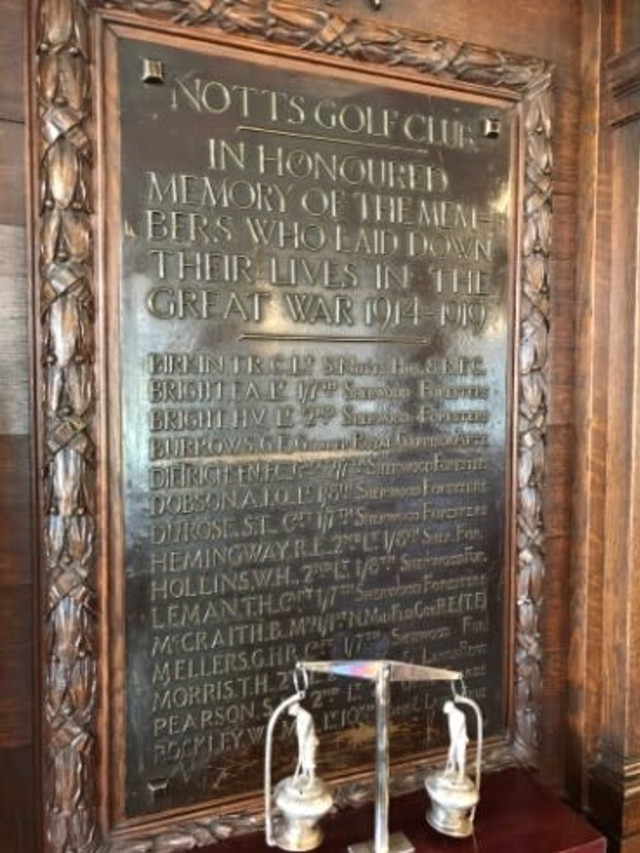
I decided that I would try and learn more about his life and death as we are nearing the 100th anniversary of the end of World War 1.
I knew that around 1.1 million lives were sacrificed and I began to form an idea around actively remembering those detailed on the memorials.
I discovered that a conscious decision was made to leave bodies as they lay in the fields and no attempts were made to repatriate the remains for families to grieve over. This led to a substantial number of memorials being created in local areas so there was a focal point for families wishing to remember those who had given their lives. These memorials became surrogate graves. Many regiments were formed as “Pals” meaning that a local community could be devastated if that unit were involved in a particularly bloody incident. The Pals concept also led to massive peer pressure ensuring increased sign up to the services.
These memorials are detailed within the Imperial War Museum archives and records and they are a very useful record of social history. I discovered that there were 136 separate war memorials listed as having direct correlation to golf clubs or courses and I set up some general research.
I had visited Carnoustie just before The Open and there was a beautifully simple, but touching ceremony undertaken by the Captains of Carnoustie, a single piper and a representative of the Royal British Legion. There is a war memorial on the Carnoustie site commemorating the dead of WW1 who were members of the golf club and town. They simply read through each of those names and then read a section of the poem by Robert Laurence Binyon called For the Fallen.
Poem by Robert Laurence Binyon (1869-1943), published in The Times newspaper on 21stSeptember 1914.
With proud thanksgiving, a mother for her children,
England mourns for her dead across the sea.
Flesh of her flesh they were, spirit of her spirit,
Fallen in the cause of the free.
Solemn the drums thrill: Death august and royal
Sings sorrow up into immortal spheres.
There is music in the midst of desolation
And a glory that shines upon our tears.
They went with songs to the battle, they were young,
Straight of limb, true of eye, steady and aglow.
They were staunch to the end against odds uncounted,
They fell with their faces to the foe.
They shall grow not old, as we that are left grow old:
Age shall not weary them, nor the years condemn.
At the going down of the sun and in the morning
We will remember them.
They mingle not with their laughing comrades again;
They sit no more at familiar tables of home;
They have no lot in our labour of the day-time;
They sleep beyond England's foam.
But where our desires are and our hopes profound,
Felt as a well-spring that is hidden from sight,
To the innermost heart of their own land they are known
As the stars are known to the Night;
As the stars that shall be bright when we are dust,
Moving in marches upon the heavenly plain,
As the stars that are starry in the time of our darkness,
To the end, to the end, they remain.
I felt that this simple act of remembrance and respect was a fine tribute to those who had sacrificed their futures on our behalf.
With further research I realised that the names of all the fallen had been recorded within a database and that the Royal British Legion were encouraging the current generation to remember and acknowledge the massive debt that we currently owe to those who fought and died on our behalf.
https://www.britishlegion.org.uk/remembrance/ww1-centenary/thank-you/how-to-get-involved/
I decided to try and encourage other similar simple acts of remembrance by those golf clubs listed as holding memorials.
It soon became apparent that the archive held by the Imperial War Museum lacked photographs in the majority of memorials listed so that this effort could actually assist in the recording and preservation of these important records for future generations.
And so began a very strange journey of discovery.
My first port of call to research William Lisle Rockley was to look at the internet.
I was astonished at what it revealed. In the course of a couple of hours I was able to ascertain his full service record, a biographical timeline of his life and service history. Together with details of all of the memorials that were instituted to remember his life and sacrifice.
I was not initially aware of the significance of a war memorial until I saw grainy photographs detailing tens of thousands of people watching them unveiled and sanctified.
As I researched it became clear that these war memorials were in fact pseudo graves being used as focal points in local communities for grief and bereavement.
The authorities made a conscious decision to allow the dead to remain where they fell. To commit more men to recover bodies from no man’s land was of no military benefit so corpses lay where they fell. As artillery shells peppered this ground, the bodies disintegrated and it was impossible to consider repatriation of remains. Dog Tags were not used so identification of remains was impossible.
Peer pressure was brought to bear in many areas with the inception of PALS regiments. This ensured that friends could volunteer and serve together. Certain regiments developed who were based around sports and pastimes but the original concept was to keep local people together.
This meant many family members served and died together, it also meant that those who hadn’t volunteered stood out and many church sermons required the women in an area to pressurise the remaining men to sign up.
In the case of William Rockley I was very lucky in that his life and death had previously been researched and documented by an incredible group of volunteer archivists and historians.
http://www.radcliffeontrentww1.org.uk/portfolio-items/william-lisle-rockley/
The research conducted by this group is exceptional, meticulous and a wonderful tribute to those who served and sacrificed. They have given me permission to reference their work. If you have any interest in this area of history please visit the website. It is a superb record of social history.
The record contains his full biography and service history.
From this record I have extracted with permission a copy of his obituary published in the Nottingham Evening Post
Obituary from the Nottingham Evening Post, Tuesday October 16th, 1917
‘Lieut. W L Rockley MC: Mr and Mrs L Rockley, Cyprus-road, Nottingham, have received information that their only son, Lieut. William Lisle Rockley, was killed in action on October 11th. He was educated at Waverley School, Nottingham; Laleham, Margate; and in Paris, completing his education at the end of July 1914. He immediately joined the Nottingham University Officers’ Training Corps and gained a commission in the York and Lancaster Regiment in December. He proceeded to Gallipoli in the summer of 1915 and in addition to being wounded served with such distinction that in November he was awarded the Military Cross for conspicuous gallantry and ability. He made two valuable reconnaissance’s of the enemy’s positions and working parties, and sited a work under heavy fire. The latter operation was one of great risk and difficulty, and Lieut. Rockley showed great coolness and determination. The gallant young officer remained on the peninsula until the evacuation, in which he took an active part. In February of this year he was sent to France and shortly afterwards he was appointed ‘Intelligence Officer’ for his battalion. At the time of his death he was acting adjutant. Lieut. Rockley was killed instantaneously by a shell when proceeding to the lines in the company of his CO and the medical officer being dangerously wounded at the same time.”
I then discovered that the Rockley family were so devastated by the loss of their son that they sought to provide a permanent memorial that would be of benefit to the community at large.
His parents purchased a mile long stretch of land on the banks of the River Trent and they developed a series of walks that eventually developed into the Rockley Memorial Gardens. This is an incredible facility that is still well used to this day.
http://www.radcliffeontrentww1.org.uk/rockley-memorial-park/
Simply click on this link to access an incredible historic record. It details the history of the war memorial, its development and the value in which it is held by those who use it on a daily basis.
Detailed within this link is a wonderful archive of the remembrance celebrations undertaken by the village. They even managed to trace living relatives to attend the ceremony and receive the thanks of a grateful community.
Arguably this could be said to be one of the most successful memorial tributes in the United Kingdom and it is now a welcome addition to the records being maintained by the Imperial War Museum.
Having been taken on this journey from the clubhouse at Notts Golf Club, Hollinwell I decided to look further into golf's links to war memorials.
For more information, visit The Royal British Legion.
To hold a fundraising pub quiz at your golf club, visit The Royal British Legion Pub Quiz.
Image copyright: All images are reproduced with agree permission and not available for reuse, copyright applies.
About the author

Andrew Picken is a Golfshake ambassador and prolific golf traveller who writes course reviews, travel features, and destination guides. A passionate golfer for over two decades, he plays regularly across the UK and Europe and is involved in several golf societies and charity events. Andrew is committed to promoting the game and showcasing the variety of golfing experiences available to enthusiasts of all abilities.
Tags: Wartime History of Golf

